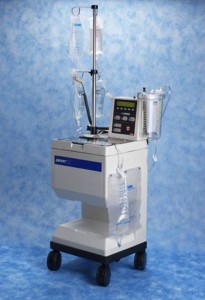Dr. Parker’s Comment: I recently attended a lecture by a world expert in blood transfusion medicine and it was eye-opening. It turns out that every day that blood, even your own blood, sits in the blood bank refrigerator, it decreases in quality. Studies show that in an ICU with really ill patients, the ones who were transfused did worse than the patients with similar illnesses and similar levels of anemia who did not get transfused. The reason is that the blood cells become more fragile, then fragment and clog up capillaries, blocking blood flow and oxygen delivery to the tissues. Here is the reference for the abstract: http://jama.ama-assn.org/cgi/content/abstract/288/12/1499
Although serious problems are less of a risk for young, healthy women who are having myomectomies (you are all really young and healthy compared to 80 year-olds in an ICU!), the best strategy is getting your blood counts up before surgery and using a cell-saver during surgery.
For women with very low hemoglobin levels (below 9), I usually use Procrit to stimulate red blood cell production for about 3 weeks before surgery. High doses of iron must also be given, so your body has the building blocks to make red blood cells, and vitamin C is also given to help you absorb more iron through the intestines. There is no magic number, but it is nice to have the hemoglobin 10 or higher before surgery, unless heavy menstrual bleeding does not allow us to get the blood counts up even with Procrit and Vitamin C (very rare).
The second strategy is the use of the cell saver, which allows us to replace blood loss, if necessary, immediately during surgery with the patient’s own blood, before it has a chance to deteriorate. Also, there is no risk of HIV, hepatitis or mismatched blood with the cell-saver.

Blood is suctioned from the incision and operative area, stored in the canister, and then filtered and returned to the patient through an IV
And lastly, the current recommendation is to not transfuse blood unless the patient is very dizzy when they stand up or very weak, or until the hemoglobin is below 7 (it used to be below 10). Since the blood doesn’t work very well anyway, it is better and safer to allow the patient to build up her own blood slowly during the recovery period.
There is a push to explain all this new information to doctors because it is different from what we were all taught. So, you will find differences of opinion based on a doctor’s knowledge of this new information.
More about myomectomy surgery can be found at this link: https://www.fibroidsecondopinion.com/abdominal-myomectomy/



